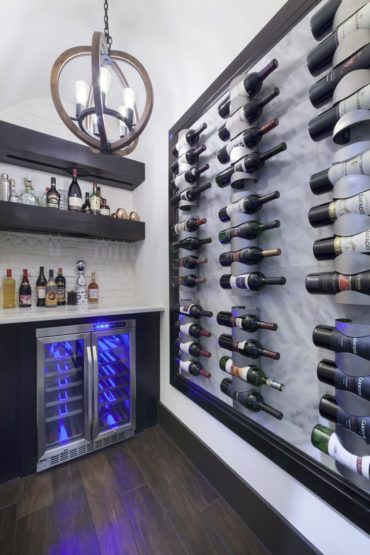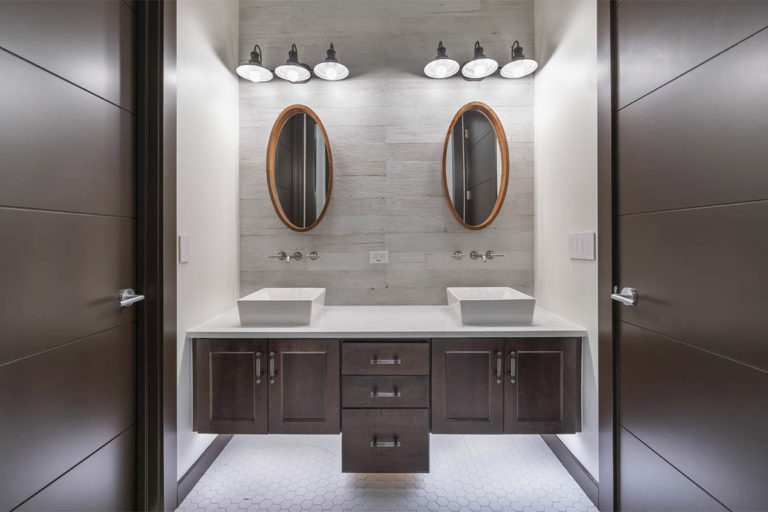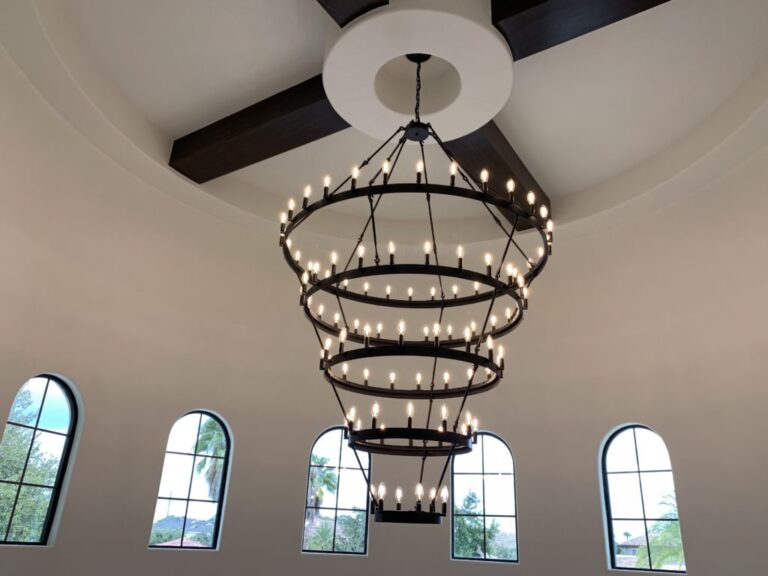
Modern-day wine storage no longer hides out in the basement. In today’s homes, wine storage commands attention as a design element and functional amenity. Orlando Custom Home Builder Jorge Ulibarri says wine storage is on the must-have list of most of his clients. “Wine walls, glass wine rooms, walk-in wine storage under stairways and tasting bars are some of the more popular oenophile requests,” says Ulibarri, owner of Cornerstone Custom Construction in Heathrow, Florida. “Styles of wine storage are changing from the typical time-worn, rustic and Tuscan looks to more sleek and contemporary,” adds Ulibarri. The Orlando custom home builder has constructed dozens of stylish and functional wine rooms and storage spaces and shares his top 3 Wine Storage Design Tips.
Choose a Location with Ideal Conditions:
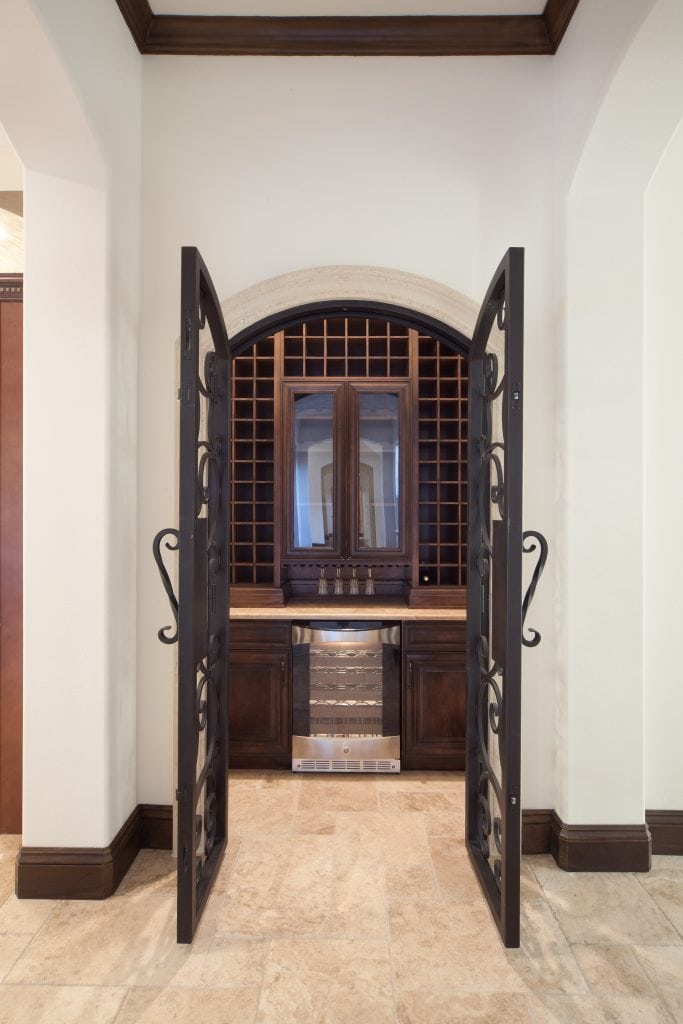
The proper storage of wine requires a cool, dark place with higher levels of humidity. Ideally, wine should be stored at 55 degrees to 58 degrees. Unregulated temperature fluctuations (even as little as 5 to 10 degrees) can deteriorate wine. Why? As the temperature rises, a wine bottle and the wine itself expands, creating pressure within the bottle that forces the wine out. When wine cools, a vacuum forms that sucks oxygen rich air back in. Humidity levels should be kept at 55 to 75 percent. Humidity levels of 80 percent or higher will cause mold to form and rot the labels. Lower levels will dry out the cork and let oxygen in. Wine should also be kept away from sources of vibrations emanating from laundry rooms or mechanical rooms.
Determine Storage Capacity:

Room size, capacity and weight of your wine collection also factors into decisions about where to locate wine storage. As a general rule, a 750ml bottle of wine weighs approximately 3 pounds. If you are installing a wine room upstairs, make sure there are enough load bearing walls and structures to support the weight. A 6-foot ceiling will hold 57 individually stored bottles per linear foot of wall space while an 8-foot ceiling will hold 75 individual bottles. These estimates are for single deep racking. The average capacity chosen by clients is 1,054. Custom wine cellar owners tend to build storage to hold double the capacity of their current collection.
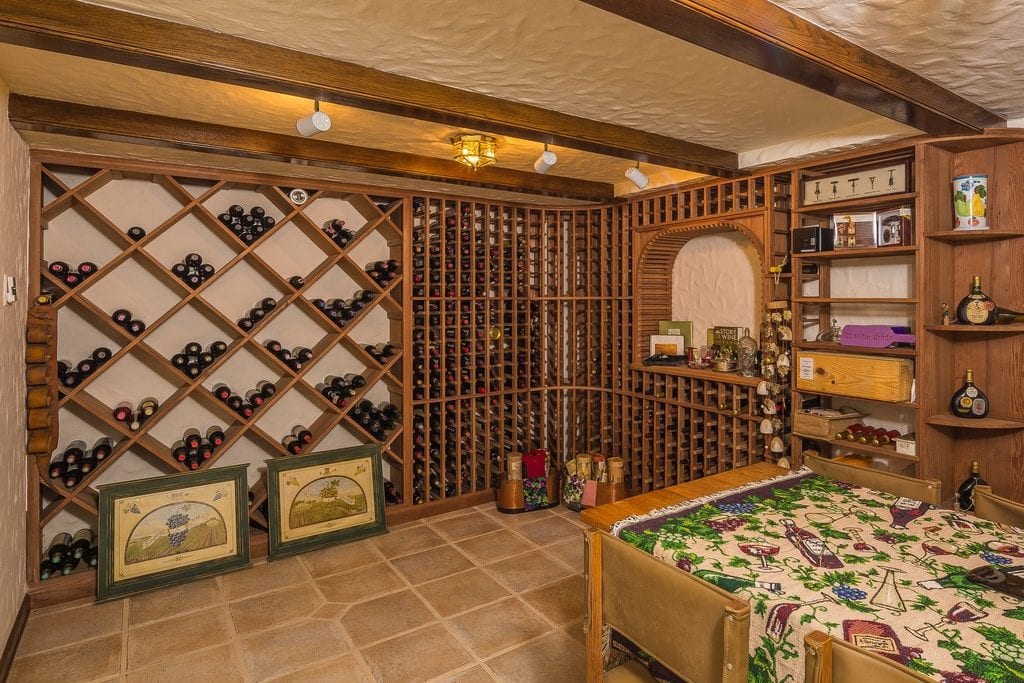
When choosing a racking system, as a general guide, keep in mind a full depth racking system is 13 ½ inches and holds an entire bottle. A reduced depth racking system is 9 inches deep leaving the neck of the bottle visible. You can also choose a double depth racking system 25 ½ inches deep that holds two bottles but it will be harder to see your inventory because one bottle sits in front of the other.
Individual storage racking is the most popular type of storage because it stores the bottle horizontally in its own cradle. Individual diamond bins are another alternative where racks are in a symmetrical diamond pattern. Diamond bins generally hold 16 bordeaux, 12 champagne or 9 magnum bottles per bin.
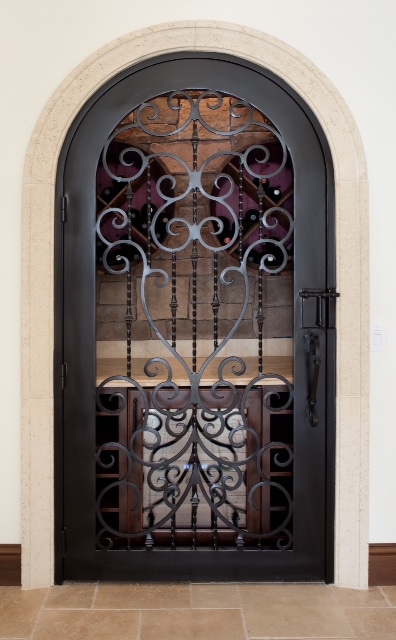
A 15 degree angle displays store bottles at the 15 degree angle to keep the cork moist and wine label easily viewed.
What is the purpose of your wine storage?
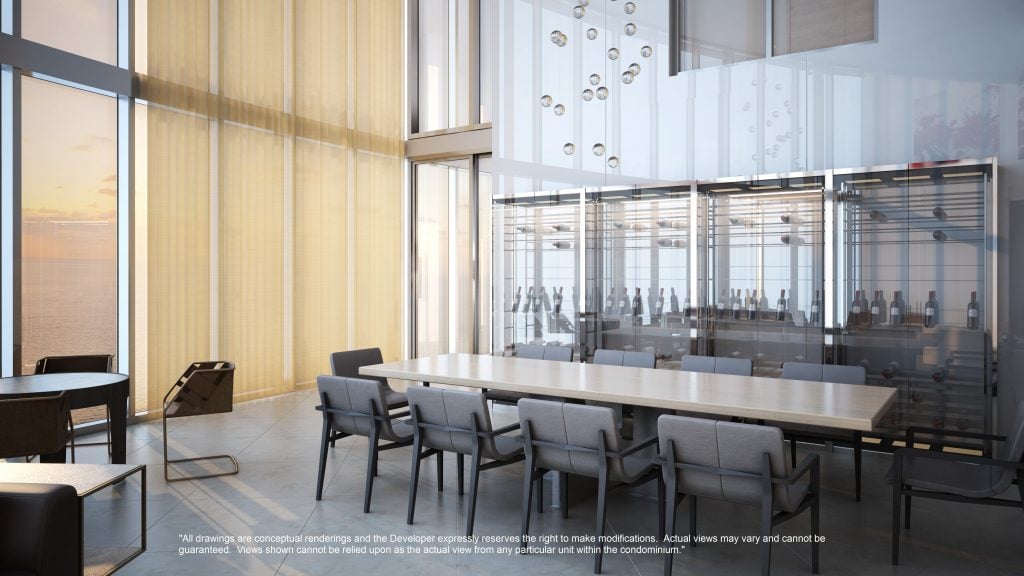
Is the wine collection space simply for storage, display or both? Will it include tasting areas? Will there be a seating area or just a standing bar? These factors will help you determine the room size and racking system as well as any decorative elements. Wine rooms and storage can add the “wow factor” to a living space as the focal point with stacked stone, painted murals, stained glass or other art. Many modern homes are opting for glass enclosed rooms visible from the main living spaces.
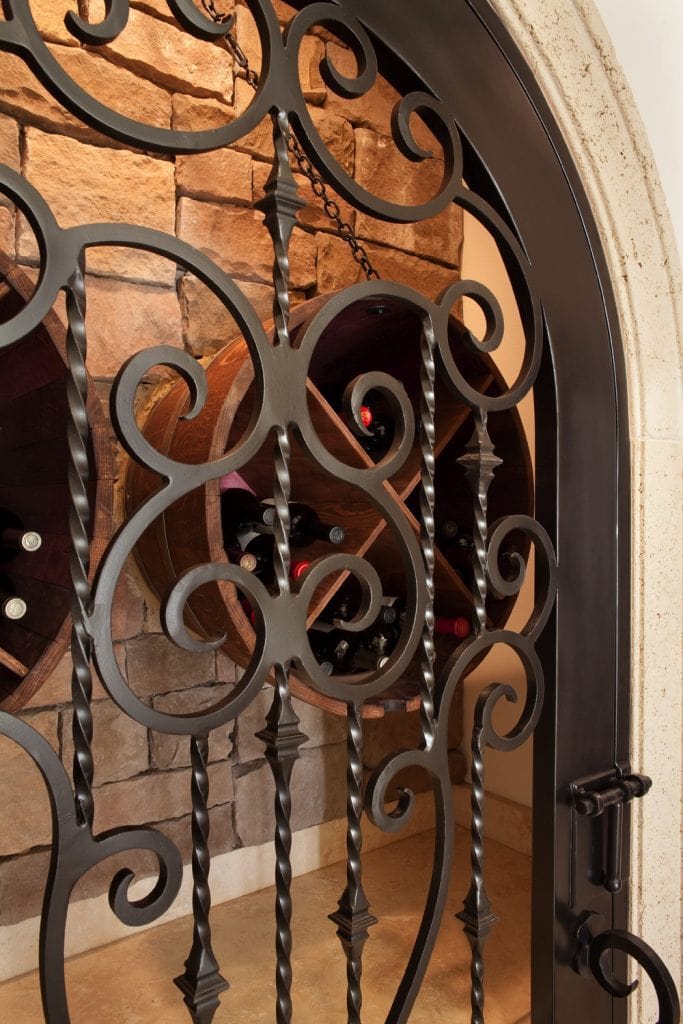
Moldings provide furniture quality detail and a tight fit for your racking system from floor to ceiling
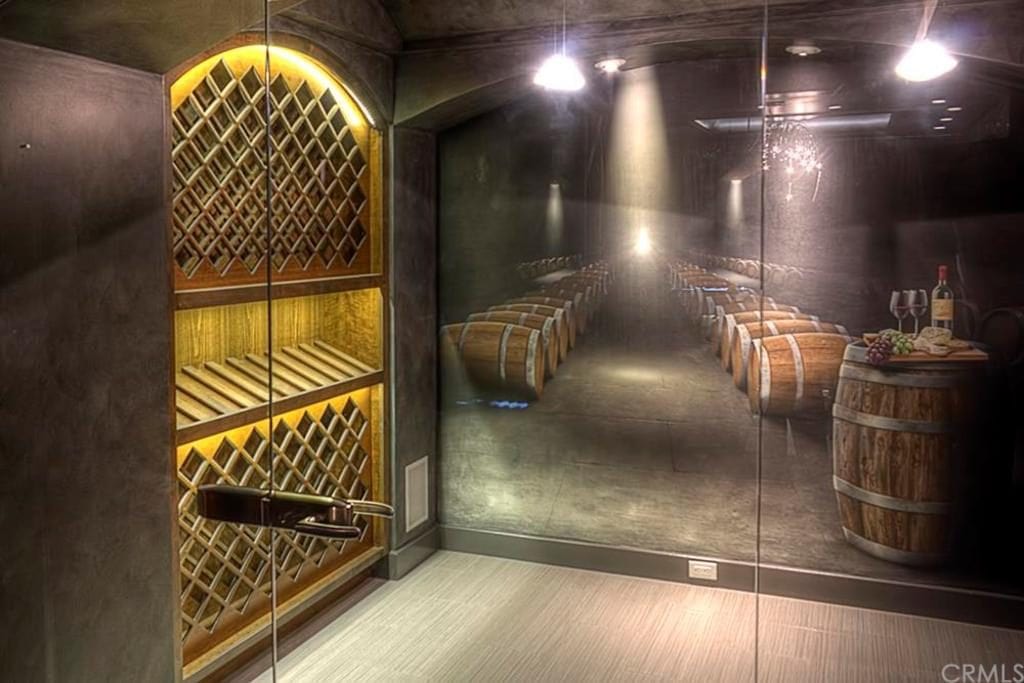
You can also embellish with a painting or mural, mosaics, stained glass, tumbled stone, hand painted tile or wood carvings.
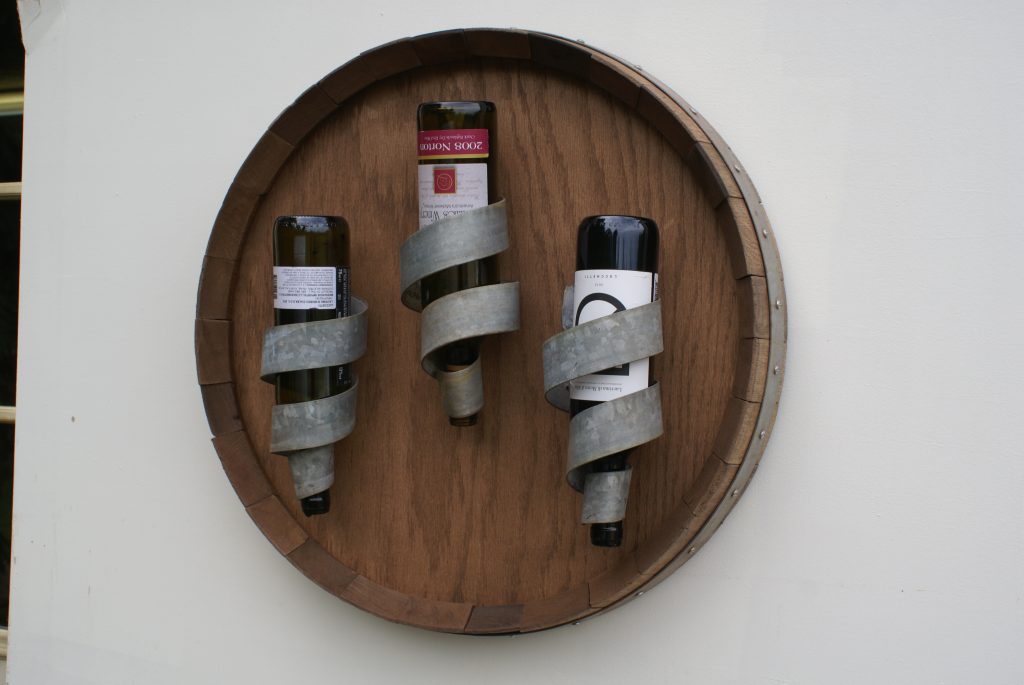
Remember flooring as to be moisture resistant and able to withstand a high level of humidity. Ideas include flooring from reclaimed wine barrels or cork
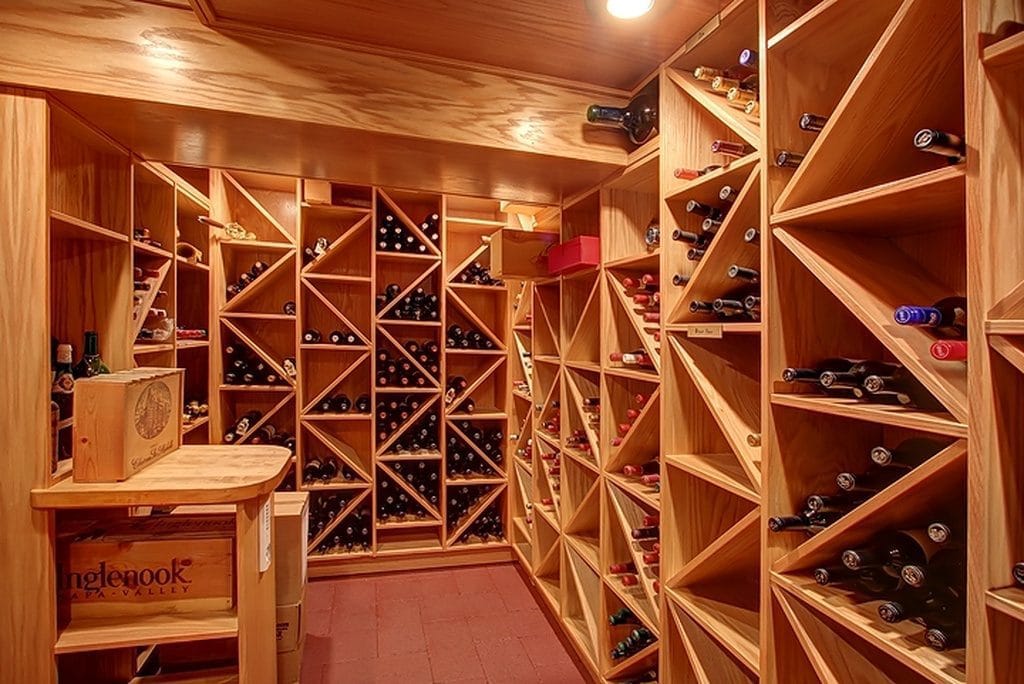
Ideal wood types for wine cellars: alder, birch, cherry, african mahogany, maple,pine, poplar, red oak, redwood, black walnut. California redwood is the most popular used in wine cellars because it’s naturally resistant to humidity and cool temperatures, requires no sealant or finish. California redwood also has less volumetric shrinkage than other domestic woods avoiding splitting, warping and opening of joints and it has a natural resistance to decay and insects. Flooring should be moisture resistant such as concrete, stone or hardwood. When working with hardwood, make sure to incorporate a half-inch gap to allow for expansion of wood. To keep humidity levels in check you can add a decorative humidifier such as tabletop, wall mounted or floor fountain. Again, you want to maintain humidity levels of 55 to 75 percent and temperatures at 55 to 58 degrees.
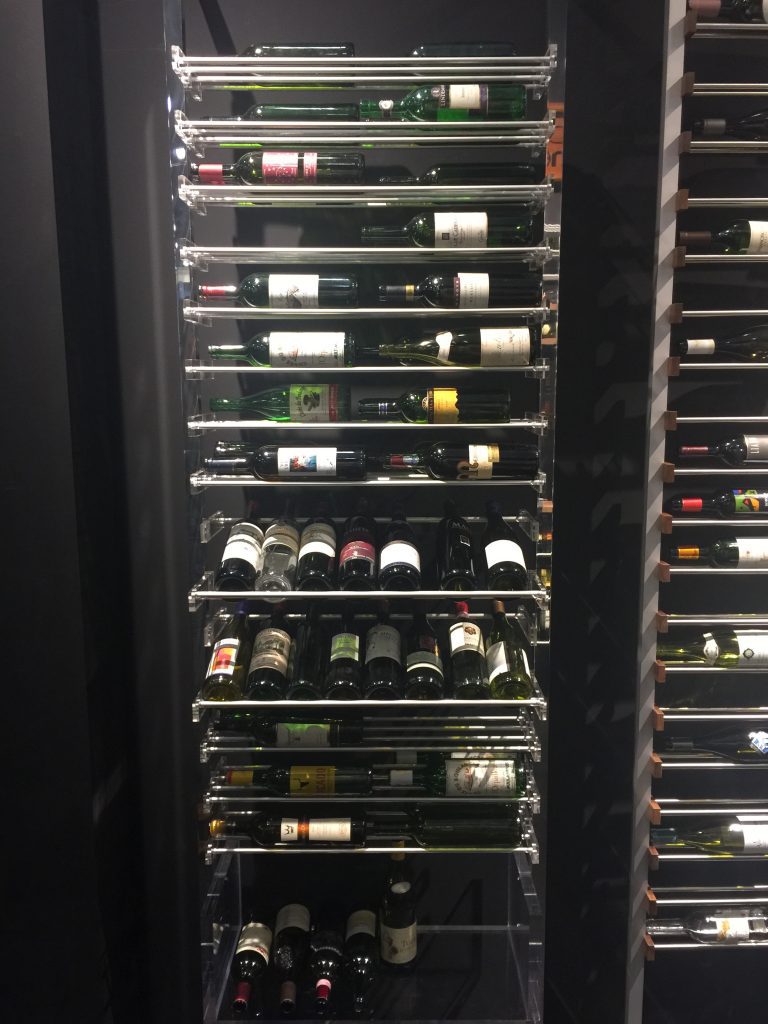
Insulation, vapor barriers, must be used to maintain these conditions without damaging the wine or the surrounding rooms. For more design tips and ideas for your custom home, subscribe to the blog by Orlando Custom Home Builder Jorge Ulibarri at www.imyourbuilder.com

